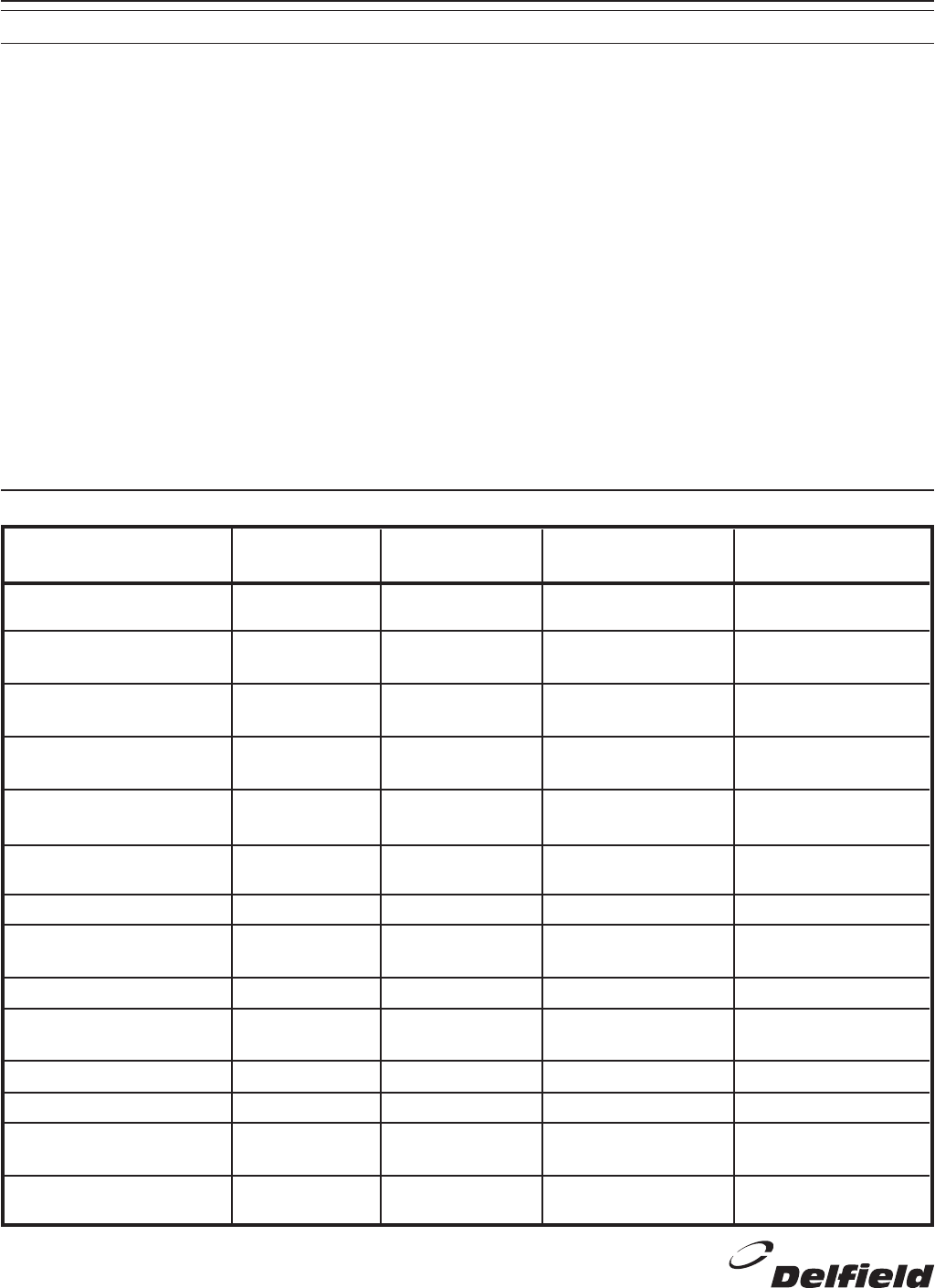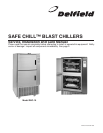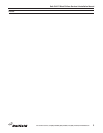
Safe Chill™ Blast Chillers Service & Installation Manual
For customer service, call (800) 733-8829, (800) 733-8821, Fax (989) 773-3210, www.deleld.com
6
PARAMETER
DESCRIPTION PARAMETER DEFAULT RANGE COMMENTS
Food probe
temperature (chilling) (FP1) 37˚F 28˚F to 40˚F
Food probe
temperature (hard chilling) (FP2) 47˚F 0˚F to 70˚F
Food probe
temperature (freezing) (FP3) 0˚F -20˚F to 10˚F
Box temperature
(soft/hard chilling) (BT1) 23˚F 20˚F to 37˚F
Box temperature
(hard chilling) (BT2) -5˚F 20˚F to 37˚F
Box temperature
(freezing hold) (BT3) -15˚F -5˚F to -30˚F
Maximum chill time (TC1) 240 minutes 0 to 240 minutes
Defrost termination
(temperature) (DF1) 55˚F 40˚F to 70˚F
Defrost termination (time) (DF2) 15 minutes 0 to 90 minutes
Defrost cycle time
(freezing) (DF3) 360 minutes 180 to 480 minutes
Print output (PR1) (PR1) OFF to PR1
Print interval (PT1) 5 minutes 0 to 480 minutes
Maximum coil temperature
(evaporator fan) (MCT) 30˚F 20˚F TO 60˚F
Chill time recall (CTR) Recall 0 to chill time alarm Stores last chill
(TC1) time /or preset
List of Parameters
MAINTENANCE
The interior and exterior can be cleaned using soap and warm
water. If this isn’t sufcient, try ammonia and water or a
nonabrasive liquid cleaner. When cleaning the exterior, always
rub with the “grain” of the metal to avoid marring the nish. Do
not use an abrasive cleaner because it will scratch the metal.
In order to maintain proper refrigeration performance, the con-
denser ns must be cleaned of dust, dirt and grease regularly.
The condenser coil is located behind the removable louvered
front and there are two coils located on the DBC-10. It is
recommended that these be cleaned at least once every three
months. If conditions are such that the condenser is totally
blocked in three months, the frequency of cleaning should
be increased. Clean the condenser with a vacuum cleaner
or stiff brush. If it’s extremely dirty, a commercially available
condenser cleaner may be required.
Door gaskets are dart style and can easily be replaced without
the use of any tools. Do not use sharp tools or knives to
scrape the bellows as this may tear the gasket and eliminate
its ability to seal. Door gaskets should be cleaned as required
to maintain their ability to seal properly. A soft bristle brush
and solution of soap and water will keep the gaskets clean. Do
not use full strength de-greasing agents on the gasket.
Pan slides are removable via the four thumb screws and are
made of stainless steel. They are dishwasher safe or can be
cleaned with soap and water.
Food Probes:
If necessary to check the probes, they are a 10,000 ohm
thermistor and it is important that they be kept away from
any high voltage wiring. There are four probes per section;
two food probes, one box probe and an evaporator probe.
Accessing the evaporator, expansion valve, and other evapora-
tor components can be done by removing the pan slides and
pulling the evaporator housing away slowly as to not pull out
any wiring. Once access has been gained wire ties can be
cut and the housing can be removed. Food probes can be
cleaned with soap and water. For optimum use of the food
probes, do not allow the handle to rest in the food. When
removing a food probe from the food do not pull on the cable,
use the handle.
The control uses a lithium battery and may need to be
replaced approximately every ve years.














